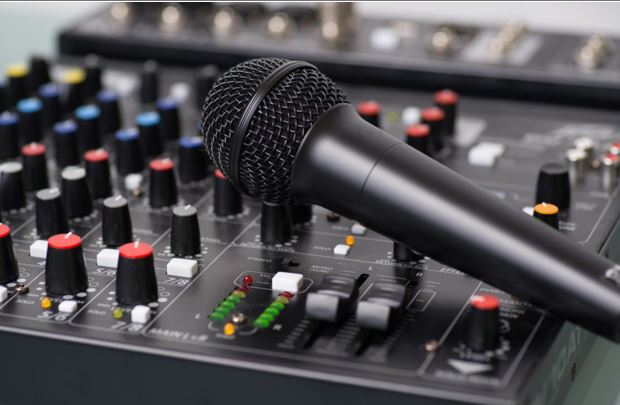The need for public address (PA) systems is far-reaching as they have become integral to operations in various settings and industries. Prime examples of where they are needed include:
- Religious Institutions
- Sporting Arenas – Such as stadiums
- Entertainment Venues – Such as Concert halls and theaters
- Healthcare Facilities
- Commercial & Retail Spaces – Such as supermarkets and shopping malls
- Academic Institutions
- Business Buildings & Corporate Offices
- Transportation Hubs – Such as airports, bus stations, train stations, and ports
Frankly, the list goes on. Furthermore, their use has structural and functional peculiarities, especially in certain settings. One such setting is stadiums, and you can click here for more information.
Overall, it is important to know what constitutes a good PA system and this article explores this subject. So, continue reading to stay informed.
Ultimate Checklist for Choosing a Modern Public Address System

Public address systems have come a long way since they began to be used in the early 1900s. The evolution has largely been characterized by the introduction of newer features that offer what previous models could not offer. Bearing that in mind, here are some must-have features for modern models as things stand:
Audio Quality & Clarity
Besides sound amplification, audio clarity is a primary objective with them. As a result, the need to have modern models offering high-quality delivery in this regard is non-negotiable.
More specifically, high-fidelity audio delivery must be achieved, as this is crucial for ensuring that everything said is well understood. There are at least two things that ensure this happens.
The first is feedback suppression. Options that do a bad job at this would leave you experiencing audio disruptions. So, make it a necessary yardstick when choosing.
The second and equally important is noise cancellation. It is so important that you can only afford to choose something with an advanced noise-cancellation setup. Failure to do this would leave you constantly dealing with background interference.
By the way, you should know that a PA system has several components rather than just one piece of equipment. Issues with some of these individual components can cause background interference. Some of the individual components are:
- Microphones
- Amplifier
- Mixers
- Loudspeakers
- Signal Processors & Control Unit
Some of the above-listed are optional as opposed to those that are necessary. For more information on setting up a PA system, you can see: https://sound.stackexchange.com/.
The point is to ensure that these individual components have structural and functional features that guarantee the elimination of background interference.
Connectivity
Wireless connection between the various components that make up this system was impossible in the early days. However, the narrative has changed a lot. This is also because there are several wireless connectivity options. Wi-Fi, Ethernet, and Bluetooth are prime examples.
You should start by deciding if you want a wired or wireless option. Thankfully, quite a number of these models have hybrid capabilities. What this means is that they allow for the use of either wired or wireless connections. So, you may want to opt for such because of the flexibility offered.
Coverage
Whatever you end up choosing should evenly distribute sound. You do not want a select number of people complaining about their inability to hear whatever message is being passed across as opposed to others who comprehend well enough.
However, achieving this goal is also down to using an adequate number of certain individual components with loudspeakers high on the list. So, bear this in mind when getting a public address setup.
Scalability
Versatility is important with these audio amplification and distribution setups. This is especially true for those who would be using it in various settings.
For example, imagine using the same setup in a small and large hall. The point is to get something that can be efficiently adjusted to meet the demands of each setting, par time.
Installation & Use
The right option would be very user-friendly. This should be reflected in installation and usage.
Speaking of installation, some options are user-friendly to the point that there is very little or no need for technical expertise during the set-up process. This is also because they come with clear instructions on how to properly go about installation and even maintenance. You should consider such.
Furthermore, ease of use after installation is also a major part of user-friendliness. So, ensure that yours offers a great deal of this and thankfully there are recommendations to this effect.
One such is opting for something that allows for remote control. A prime example would be a PA system that can be managed with a mobile application. Another recommendation is getting a public address system with intuitive interfaces. To this end, you may want to consider a model that has the following features:
- Pre-Programmed Settings
- Simplified Control Panels
- Voice Activation
- Automated Scheduling
- Multilingual Support
- LED Indicators
- Color-Coded Outputs & Inputs
All of these features and more make PA systems very usable. However, some of the above-listed will be more of a necessity for you than others. So, make an informed choice bearing this in mind.
Cross-System Integration
Isolated use of PA systems cannot be tolerated in certain settings. This is because of how important it is for integration with other systems to happen.
Thankfully, the design of some modern models allows for cross-system integration. You can read this article for information on the design of modern public address setups. By the way, some of the other systems that integration can happen with include:
- Streaming Services
- Access Control
- Mass Notification
- Digital Signage
- Telephony
- Security
- Emergency Alert
- Intercom
- Building Management
- Audio-Visual
- Event Management
- IoT Platforms
- Lighting Control
Overall, it depends on the setting in question. So, opt for something that can integrate seamlessly with systems that are necessary to your operations.
Conclusion
Public address setups have become an integral part of the operations of various industries and setups. As a result, making the right choice is important, and an understanding of the must-have features of modern PA systems is required for this to happen. Thankfully, some of the said features have been discussed here and should inform your choice.




